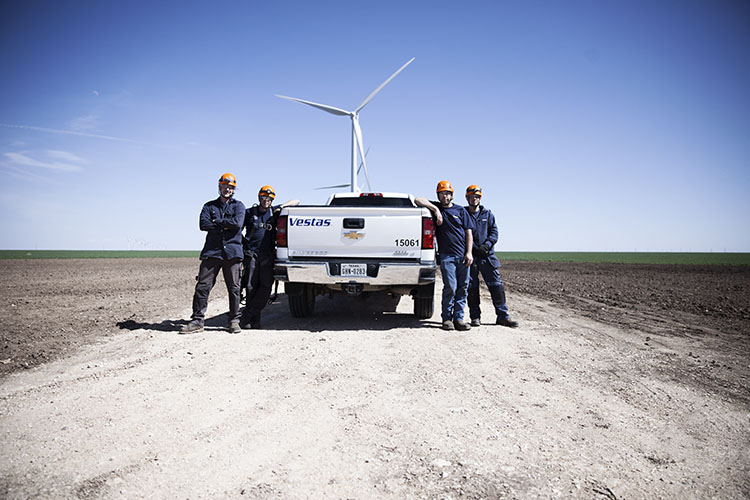The four-year extension of the Production Tax Credit (PTC), which typically only applies to new installations, has many asset owners looking to take advantage of the new rules through repowering existing assets.
In this post, we talk with Chris Brown, president for Vestas’ sales and service operations in the United States and Canada, about repowering considerations and how to choose which option is right for your assets.
What changes are occurring in the market to drive operators to consider repowering? What makes now the right time to evaluate options?
Turbine technology has evolved rapidly in the last five years, and the turbines of today bear little resemblance to the technology installed 10, 15 or 20 years ago.
That aging fleet, combined with the production tax credit (PTC) extension, is driving owners and operators to move to capture the PTC value for another 10 years on their existing assets, and reap the cost savings and revenue benefits of repowering their projects.
What are advantages of repowering?
With stable PTC production revenue, it makes sense for owners to invest in upgrades that will keep their turbines operating reliably for the next 10 years or possibly beyond.
At the same time, owners benefit from reduced operation and maintenance (O&M) costs of as much as 40% since older technology is more expensive to repair. They also gain increased turbine efficiency, annual energy production (AEP) and availability. Increasing availability by 1% to 2% can have the same financial impact as increasing AEP by 2% to 4%.
What types of repowering solutions are available?
The right repowering solution depends on the age of the fleet and the owner’s priorities. Depending on the solution, owners can reap AEP improvements of 10% to 40% while driving down O&M costs by as much as 40%.
Refurbishing, or selectively replacing components, is well suited for highly depreciated projects where replacing only a few components will satisfy the four times fair market value spend threshold.
Repowering the nacelle and rotor, which is ideal for turbines at or near their 10-year PTC expiration, is best suited for projects where the new nacelle and rotor will deliver significantly higher AEP or address chronic reliability issues.
And finally, full repowering, or replacing older generations of turbines with substantially larger new technology, can be the optimal solution for plants at or near their end of life. Repowering with new turbines delivers dramatic AEP increases and eliminates the reliability and supply chain headaches associated with running obsolete turbines.
What should operators consider when selecting the right solution?
Finding the right repowering solution requires balancing variables such as asset valuation, project timing and the owner’s upgrade priorities. For example, operators should ask questions such as are owners prioritizing maximizing the PTC, extending the life of the asset, reducing O&M costs, increasing AEP, replacing an old fleet with fewer modern turbines or looking for other types of improvement?
Chris Brown is President for Vestas’ sales and service operations in the United States and Canada. Brown also serves on the executive committee as Group Senior Vice President for Vestas Wind Systems, the world’s largest provider of wind turbines. Brown currently serves as Chairman of the Board for the American Wind Energy Association.
Brown, an energy industry leader with decades of experience running electric utility and independent power operations, joined Vestas in November 2012.
We will be at Windpower May 23-25th in Anaheim, booth #2820. Come see us!
